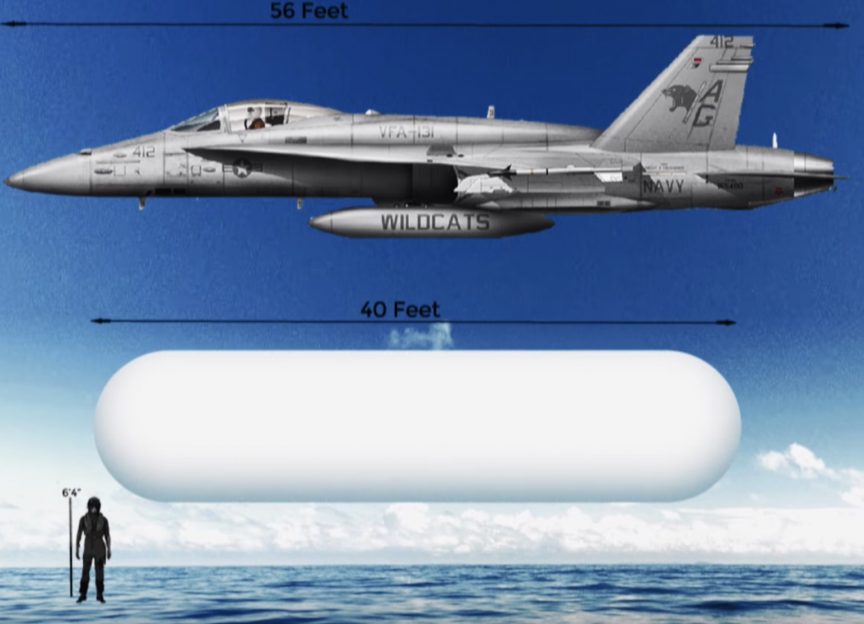15-minute reading time
Deep Prasad, 2019, The Villager And The F-18. Medium.
Consider the following thought experiment: a villager in the mid-17th century walks along a dirt path, he’s headed home after a long day of working on his farm. With nothing but flatland and blue skies around him, he looks at the ground in boredom and trudges on. Suddenly a shrieking, ear-piercing sound bursts from the skies echoing all around him. It is as if the planet is angry with him and he instinctively covers his ears, looking around for the source once the ongoing roars begin to subside.

Picture seeing this while being alive in the 1600s. You probably wouldn’t even recognize the missile as a weapon.
A giant light grey, metallic-looking bird flies overhead and disappears out of sight. He cannot believe anything can move as fast as what he just saw, and he can only begin to guess what the object was. In our experiment, this object that he observed is a McDonnell Douglas F/A-18 Hornet from the year 1984, travelling at its maximum speed of 1190 mph. This is well over the speed of sound, therefore the 17th century villager felt the wrath of a sonic boom for the first time. While we grow up used to the idea of engines, electricity, airplanes, iPhones and quantum mechanics, the villager has no chance in understanding what he has seen.
Roughly speaking, the Tic-Tac was to Commander Fravor, what an F-18 would have been to a villager in the mid-17 th century.
The first versions of airplanes that approached the speed of sound would run into a series of differing issues that made it virtually impossible to reach the speed of sound. At the time, the physics behind travelling faster than the speed of sound, otherwise known as supersonic flight, was not well understood. When flights reached transonic speeds (0.8 to 1.2 times the speed of sound), disruptive turbulent air flow conditions would be created that made the propellers exceedingly more inefficient. More powerful and efficient engines would be needed to make up for those turbulent conditions. Another issue to cracking supersonic speed were the formation of shockwaves on curved surfaces. These engineering problems that prevented us from reaching the speed of sound were collectively referred to as the “sound barrier”. We overcame each problem eventually, but it took years of hard work, money, intelligence and time.
Many still would not have been able to predict or conceptualize what a sonic boom must be like until they observed one themselves. Therefore, the villager couldn’t possibly be expected to predict the existence of sonic booms or connect it to what he had observed.
Speaking of F-18s, the U.S. Navy recently admitted that 3 videos that were leaked are authentic cases of “Unidentified Aerial Phenomena” and should not have been released for public use. According to Navy spokesperson Joe Gradisher, their increased transparency about UAPs is “all about frequent incursions into our training ranges by UAPs”. At face value, that sentence seems harmless enough. The U.S. spends up to 500 billion dollars every year on its military, with their training sessions alone often involving millions of dollars of equipment and personnel tasked with defending the country. It would be extremely dangerous if something were to enter their airspace without permission, including during training. It would be even worse if their pilots and personnel couldn’t report the incursions for fear of being ridiculed.
2 questions. Why are frequent incursions happening in restricted Navy airspace in the first place? And more importantly perhaps, how has this problem of frequent UAP incursions not been stomped out by the world’s most powerful military already? I don’t have an answer to the first question, I don’t know why these incidents are happening. I do think I know the answer to the second question, however. UAPs are doing the equivalent of flying a drone in and around the restricted parts of the Area 51 base and getting away with it. To understand how they pull it off, let’s look at a real-world example of what the Navy considers to be a UAP. Out of the incidents depicted in the 3 videos the Navy refers to . . .
These vessels housed the world’s most advanced radar and threat detection equipment at the time. There was a group of anomalous objects being tracked by the USS Princeton, these things were demonstrating hypersonic velocities and would sometimes travel in groups of 10 or more at a time. After more than a week of observing this, radar operator Kevin Day decided it was time to intercept these things to figure out what they were. This is when commander Fravor in the video below stepped in and went with a squadron to the location of the objects that were currently being observed. All of them instantly disappeared and only one stayed behind by the time Fravor and his crew got there in their F-18s.
The Tic-Tac commander Fravor intercepted went from 28,000 feet to sea-level in approximately 0.8 seconds. This means the Tic-Tac was capable of achieving a velocity of at least 23,864 mph, which is 31 times the speed of sound.
As you can see, he says the object looked like a Tic-Tac, except it was 40 feet long. Here is a link to a 270 page paper doing an extensive scientific analysis of every data point that the team could get their hands on in the public domain. Here is another paper, this time from Dr. Kevin Knuth, former NASA research scientist and currently a professor of physics. It is peer reviewed and analyzes a handful of UAP cases, with the Tic-Tac being one of them. Both papers are chock filled with mathematical models that attempt to calculate and infer the g forces and velocities the Tic Tac was able to reach during its interaction with Fravor and his team. This is where things get interesting. According to Kevin Day, he said he tracked the Tic – Tac commander Fravor intercepted go from 28,000 feet to sea – level in approximately 0.8 seconds. This means the Tic – Tac was capable of achieving a velocity of at least 23,864 mph, which is 31 times the speed of sound.
The maximum speed of the commander’s F-18 is 1,190 mph. This means the Tic-Tac is 20 times faster than the F-18 (23864mph/1190mph = 20). Let’s say we wanted to calculate the difference in technological capability and speed between the F-18 and the villager in our thought experiment. The fastest mode of transportation the villager can access is a horse, and suppose he’s lucky and owns the world’s fastest horse capable of reaching 55 mph. In his case, the F-18 is 22 times faster than the villager’s horse. So, roughly speaking, the Tic-Tac was to Fravor, what an F-18 would have been to a villager in the mid-17th century.
How was it able to travel at 31 times the speed of sound without generating perpetual sonic booms?As absurd as it may seem, this is what the numbers say. When we take the ratio as it stands today, it took us 300 years of advancements and not to mention the birth of billions of people until we could build a method of transportation greater than 20 times what we had in the 1600s. Now that we’re at the peak of our science and aerospace capabilities, we have to constantly innovate and find new ways of discovering lighter materials and fuel sources with higher energy densities. This takes time, as it usually ends up being the case that having more propulsion capabilities includes increasing the weight of your system. This then increases the demand of propulsion and so on. If you want to know more about the challenges of aerospace engineering, just ask Boeing where the total program cost for the F/A-18 A/B/C/D/E/F series was $48 billion. Roughly 1400 super hornets have been built. Or you could ask SpaceX which also spends billions forever solving the balancing act of weight and propulsion. Given that these guys are pushing to the absolute limit what we can do with oil and any other fuel source available to us on Earth, it is unlikely to see a sudden jump of a factor 20 in capability. It is much more likely that we make a series of little wins along the way such as finding a lighter and stronger material or a slightly better variant of fuel for our rockets and F-18s year by year. Looking back at the past 6 decades, that is exactly what has been the case.
Okay, so the Navy has gone head to head against something centuries ahead of us technologically, and they did not want the story out. Now it’s gotten to a point where pilots are encountering these kinds of objects almost daily in recent years. With the shapes of the objects ranging from cubes, gyroscopes and saucers. None of this is weird at all, nope.
If it’s another country doing this, we would be looking at an act of war and would have seen an appropriate response long ago.
Exactly as the villager stood no chance in catching up to the F-18, Commander Fravor had no chance catching up to the Tic-Tac. I make the technological comparison on speed alone but there are other oddities to the Tic-Tac that scream it is not of our society or world. That it is so much beyond our time it is incomprehensible quite frankly how it even moves. For something to fly, you have to be able to to counteract the forces against you. It is why airplanes have wings and so many design changes had to be made before we could cross the sound barrier. The Tic-Tac on the other hand had no wings, no flight surfaces, no visible engine and shows absolutely no propulsion signature in the IR video that was released (one of the videos we weren’t meant to see). Without propelling itself, how is it moving? Without wings, how is it flying? Without a shock cone or a shape fit for supersonic and hypersonic velocities, how did it not break apart or fail in crossing the sound barrier? Finally, and most importantly, how was it able to travel at 31 times the speed of sound without generating perpetual sonic booms?

Each circle represents a sound wave as it ripples out and away from the source. In this case the F-18 is the source. Diagrams a-d increase with respect to the speed of the object relative to the speed of sound. (a) Less than the speed of sound. (b) Speed of sound (c) Exceeding the speed of sound (d) Greatly exceeding the speed of sound, this produces a narrower v-shape with overlapping circles.
Let’s define Sound in the context of the villager’s story. Sound is the audible, oscillatory change in pressure inside a medium. With our medium being air. As the F-18 is creating a lot of sound, we intuitively know that there must be a change in air pressure as well. When the F-18 starts flying faster than the sound waves it’s creating, the sound waves get bunched together and turn into what’s called a shock wave. The shockwaves along with one’s position on the ground to the object defines the area that a sonic boom will be heard. This is otherwise known as the “boom carpet”. Since the F-18 displaces so much air and causes a change in pressure as it moves through the atmosphere, it will always create sound waves and therefore the sonic boom is inevitable. In fact, this holds true for humans travelling at those speeds too! Alan Euastace sky dived from 135,000 feet up. This was high enough that he ended up travelling well past the speed of sound during his descent, something that took simple math to predict. What wasn’t so easy to predict was the fact that he would go onto create a sonic boom. It was deemed impossible on the count that he was only a person and thus too small. Yet it happened because in the end of the day he was creating a change in air pressure which eventually turned into the sonic boom that was heard.
The Tic-Tac does not show any signs of absorbing an irregular amount of energy . . . That means it’s somehow here and not here at the same time potentially.
This is why I ask how the Tic-Tac was able to move at 31 times the speed of sound and not make a sonic boom. It should be moving the air around itself like any other physical object would. As you read this you’ve displaced the air around you just by existing. We also received solid radar returns and electro-optical data. All matching real, physical objects. If the Tic-Tac were a hologram, it would not return the same radar signature at all compared to a physical object. This means that either the air is somehow completely unaffected by the presence of the Tic-Tac, or it’s managing the change in pressure so well that we don’t “hear” it. It “muffles” itself so to speak by absorbing the shockwaves it’s creating. The problem is, based on the imaging we see in the infrared video as taken by the F-18 FLIR pod, the Tic-Tac does not show any signs of absorbing an irregular amount of energy. Its heat distribution would be different and sporadic. That means it’s somehow here and not here at the same time potentially.
These are critically thinking, humble and mentally strong people whose lives were changed by a genuinely profound and extraordinary experience. They are equally as lost as you and I are.This implies that the Tic-Tac might be using more spatial dimensions than the 3 we’re used to. There has been a lot of work in theorizing extra dimensions and of course all of these are more so arbitrary mathematical models of the Universe in the end of the day. It is not that the Universe actually has 3 Dimensions and the 4th being time. It’s only convenient to treat it like it does at the macroscopic scale. Whatever the Universe is really doing might be more odd than what could be described by say, physical and non-physical dimensions (such as time). So maybe, just maybe, the engineers of the Tic-Tac have a similar barrier they had to cross in order to achieve flight that goes beyond leveraging the known dimensions we’re used to. Could it be possible that it’s leveraging forces in compact dimensions we haven’t yet generated the energy or technique to access? In any case, I have no doubt that the object leveraged very advanced physics and engineering. It may even utilize elements or useful isotopic ratios that are unattainable for us. The villager has no idea what it’s like to have running water or TV. Similarly, we might have no idea what luxuries or technological conveniences a more advanced intelligence capable of creating the Tic-Tac might have access to.
Over the past year, I’ve gotten to know online and in-person, some of the people who were present and onboard the USS Princeton and USS Nimitz carrier during the days the Tic-Tacs were observed. These are critically thinking, humble and mentally strong people whose lives were changed by a genuinely profound and extraordinary experience. They are equally as lost as you and I are, and have various theories about what the Tic-Tac was and where it came from. I have my own, which is that it was not made by human hands. After meeting people from DoD, CIA and NASA who were or are intricately involved with the UFO phenomena at an official capacity, as well as doing my own investigations in general, I concluded that there really does exist extremely advanced technology manufactured by a non-human intelligence and the art of studying them is extremely lucrative plus critical to national security. Imagine being the country reverse engineering technology centuries ahead of their time, and succeeding in certain key ways. A person could become theoretically invincible with the capabilities of the Tic-Tac. An unstoppable adversary isn’t a good idea for anyone in my opinion. If someone does own this technology, they’ve managed to elude billions of people in the development of the tech (the Tic-Tac in this case). They’re also spending a lot of the time they interact with the human population by reminding the military that their efforts in defending themselves against UAP are futile. I was told that the details of any attempt to contact UFOs is classified. This is also something Luis Elizondo publicly stated in the Unidentified docu-series. The seemingly increased rate of incursions without possibly any direct communication on the UAP’s end signals to me that they’re sending a message but through their actions.
Instead, they’re becoming an ongoing, polite pain in the neck to those in charge while also revealing themselves slowly to the population on an individual basis. To the point that the idea of their existence spreads quickly through credible/influential individuals (pilots, radar operators, civilians and military scientists, etc.) and not just the top-down organizations like Government. Kevin Day said the Tic-Tacs acted like they just wanted to be left alone. If that’s true about them, then maybe these civilizations are using invisibility cloaking, holograms and spacetime manipulation among other technologies to go about their day undisturbed. Every now and then advanced sensors like the AESA pick up on them regardless, which leads to incidents like the Tic-Tac.
There are parties with purported UFO crash materials who are studying their materials and writing papers on them. We are talking about materials that show a high likelihood of being engineered, with isotopic ratios indicating they don’t originate from our solar system.
In my opinion, I could see that happening to us humans too one day when we have the ability to go to other planets and study more primitive or developing civilizations. There would be so many new lifeforms to study, and an entirely unique path that evolution would take. This would lead to fundamentally different kinds of civilizations and cultures worthy of studying without contaminating ideally. Maybe we’re the equivalent of an uncontacted tribe on Earth, where we’re mostly left alone to our savagery and ignorance. Every now and then one of us catches a glimpse of an airplane and our tribal perception thinks it’s God or something mythical when it’s really only advanced technology. In any case, I hope you enjoyed this deep dive into what I think it means for the Navy to indirectly acknowledge the existence of the Tic-Tac. We are in uncharted territories and I could not be more excited. It is my view that if we learn to overcome our ignorance, accept a humble perspective that we could be one of many intelligent races out there in the Universe and then attempt to make contact with whoever is behind these UAPs, we’ll advance enormously as a civilization from an intellectual and probably spiritual perspective. Right now though, it seems that we lack so much order that we can’t even properly sort out the question of whether we’re alone in the Universe or not. Most people around the world are likely not prepared to accept one on one contact with an “Alien intelligence”, for lack of a better word. They have not had the time to digest the possibility or incorporate it into their world view. Until that changes, I think we can expect a continued increase in UAP incursions as time goes by. We need to keep in mind though that just as the villager lacked the ability to photograph an F-18, we may lack the tools to “photograph” or truly capture the presence and entirety of the Tic-Tac for now.
Time will tell how close to the truth I am, all I can do is stick to my intuition and logic and engage with others who are paying attention to this topic. There are new thinkers coming to the field of “UFOlogy” frequently and exciting projects in the civilian front are happening all over the place. For example, Dr. Kevin Knuth the former NASA research scientist is going on an expedition to the location where the Tic-Tac was seen in order to hopefully observe it again and study it. Other people he is going with include radar operator Kevin Day and myself. On the more physical study side, there are parties with purported UFO crash materials who are studying their materials and writing papers on them. We are talking about materials that show a high likelihood of being engineered, with isotopic ratios indicating they don’t originate from our solar system. There are other projects going on that I will write about in the near future, but it’s safe to say a lot of movement is happening. Good science is being done and rational, credible people are “waking up” so to speak. The future looks fascinating from where I’m standing. If I’m right, then it will be interesting to watch the world react to the realization that we may not be alone, whatever that means.


